INSTITUT SUPERIEUR D'ANTHROPOLOGIE
INSTITUTE OF ANTHROPOLOGY
ONLINE COURSES / COURS A DISTANCE
INSCRIPTION 2012 / Session III : Juillet 2012
REGISTRATION 2012 / Term III : July 2012
IRAN – 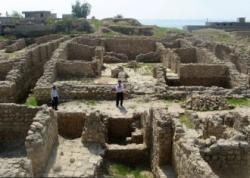 Siraf - A team of U.S. and Iranian archaeologists have recently commenced a series of underwater excavations to identify the ruins of the historical port of Siraf in the Persian Gulf. With a about an 1100-year-old history, Siraf is located in the northwestern part of Bushehr Province in southern Iran. At one time, the port had been one of the major centers for marketing pearls and silk in the region, but it was gradually submerged over the centuries. “Three or four archaeological strata have previously been identified at the site. The most ancient layer dates back to the Parthian period, and the major archeological strata are related to the Sassanid era and the early Islamic period” Siraf Cultural Heritage Studies Center former director Behruz Marbaghi said. He said that most of the archeological strata have been submerged under the sea. “According to some historians, the city of Siraf had a population of about 300,000 during the early Islamic era and this fact shows that it was a large city. However, today, just 7000 people live in Siraf in a small area,” Marbaghi said. He described the historical society of Siraf as civilization and said, “If the archeologists can identify the Siraf civilization, the history of the region should be revised.”
Siraf - A team of U.S. and Iranian archaeologists have recently commenced a series of underwater excavations to identify the ruins of the historical port of Siraf in the Persian Gulf. With a about an 1100-year-old history, Siraf is located in the northwestern part of Bushehr Province in southern Iran. At one time, the port had been one of the major centers for marketing pearls and silk in the region, but it was gradually submerged over the centuries. “Three or four archaeological strata have previously been identified at the site. The most ancient layer dates back to the Parthian period, and the major archeological strata are related to the Sassanid era and the early Islamic period” Siraf Cultural Heritage Studies Center former director Behruz Marbaghi said. He said that most of the archeological strata have been submerged under the sea. “According to some historians, the city of Siraf had a population of about 300,000 during the early Islamic era and this fact shows that it was a large city. However, today, just 7000 people live in Siraf in a small area,” Marbaghi said. He described the historical society of Siraf as civilization and said, “If the archeologists can identify the Siraf civilization, the history of the region should be revised.”
http://tehrantimes.com/arts-and-culture/99883-us-iranian-archaeologists-team-up-for-underwater-excavation-in-persian-gulf
ISRAEL – 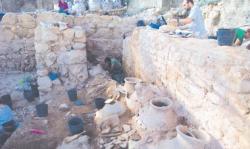 Tel Hatzor - Archeologists have discovered large jars filled with 3,300-year-old burnt wheat at the excavation sites of the Tel Hatzor National Park in the Upper Galilee. A team from the Hebrew University of Jerusalem and the Israel Nature and Parks Authority (INPA) uncovered 14 large pithoi-style bulk storage jugs filled with the wheat inside what was a storage room in a monumental, palace-like building from the Canaanite period (2,000-3,000 BCE), the INPA said on Monday. “Hatzor flourished during the Middle Canaanite period (1,750 BCE) and during the Israelite period (900 BCE), and generated the biggest fortified complex in Israel during this period,” said Dr. Zvika Tsuk, chief archeologist of the INPA. “The city was one of the most important towns for the duration of the Fertile Crescent, maintaining trade relations with cities in Babylon and Syria, and substantial quantities of tin for the bronze industry were sent to the city.”
Tel Hatzor - Archeologists have discovered large jars filled with 3,300-year-old burnt wheat at the excavation sites of the Tel Hatzor National Park in the Upper Galilee. A team from the Hebrew University of Jerusalem and the Israel Nature and Parks Authority (INPA) uncovered 14 large pithoi-style bulk storage jugs filled with the wheat inside what was a storage room in a monumental, palace-like building from the Canaanite period (2,000-3,000 BCE), the INPA said on Monday. “Hatzor flourished during the Middle Canaanite period (1,750 BCE) and during the Israelite period (900 BCE), and generated the biggest fortified complex in Israel during this period,” said Dr. Zvika Tsuk, chief archeologist of the INPA. “The city was one of the most important towns for the duration of the Fertile Crescent, maintaining trade relations with cities in Babylon and Syria, and substantial quantities of tin for the bronze industry were sent to the city.”
http://www.jpost.com/Sci-Tech/Article.aspx?id=278651
IRLANDE – 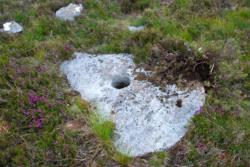 Creeslough - A link to our local heritage was unearthed recently with the discovery of a number of partially completed millwheels. The hand carved stone wheels were found in a bog land area near Creeslough by local hill walkers. This area was where the wheels would have been manufactured many years ago. The important local history site is where skilled masons travelled to this area of flat faced granite rock slabs where they marked out the circle and painstakingly chiselled the rugged face until it revealed the wheel outline. Some of the slabs discovered are still in this uncompleted state. It shows the lengthy process it would have taken before the completed disc was separated from its parent rock and had a hole bore or chiselled in the middle. The site also contains some examples where the carefully crafted rocks broke in half as the finishing touches were being applied to them, a source of frustration for the weary mason no doubt.
Creeslough - A link to our local heritage was unearthed recently with the discovery of a number of partially completed millwheels. The hand carved stone wheels were found in a bog land area near Creeslough by local hill walkers. This area was where the wheels would have been manufactured many years ago. The important local history site is where skilled masons travelled to this area of flat faced granite rock slabs where they marked out the circle and painstakingly chiselled the rugged face until it revealed the wheel outline. Some of the slabs discovered are still in this uncompleted state. It shows the lengthy process it would have taken before the completed disc was separated from its parent rock and had a hole bore or chiselled in the middle. The site also contains some examples where the carefully crafted rocks broke in half as the finishing touches were being applied to them, a source of frustration for the weary mason no doubt.
http://www.donegaldemocrat.ie/news/local/ancient-millwheel-discovery-near-creeslough-1-4084597
USA – 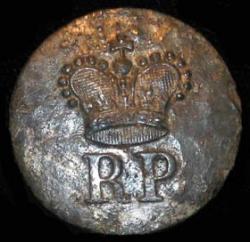 St. Augustine - A ship’s bell from a wreck found off St. Augustine has yielded another clue to the possible identify of the ship that may date from the American Revolution. The clue: a button found in the concretion still attached to the bronze bell that was discovered in 2010 by archaeologists with the Lighthouse Archaeological Maritime Program. “It’s in rough shape,” Sam Turner, director of archaeology at the St. Augustine Lighthouse and Museum, said of the button. Even so, the top part of a crown can be seen on the button and similar crowns are found on Royal Provincial buttons plus the initials RP. Those were on the uniforms of men in the Loyalist regiments, the colonists who remained loyal to the Crown during the American Revolution. That would be a big step forward in identifying the wreck discovered a few miles off the St. Augustine Inlet in the summer of 2009. One of the hypotheses archaeologists have been working under is that the ship could be part of a fleet carrying Loyalists to St. Augustine after the fall of Charleston to the Americans. Over a two-day period 16 ships were reported wrecked off the sandbar in December of 1782.
St. Augustine - A ship’s bell from a wreck found off St. Augustine has yielded another clue to the possible identify of the ship that may date from the American Revolution. The clue: a button found in the concretion still attached to the bronze bell that was discovered in 2010 by archaeologists with the Lighthouse Archaeological Maritime Program. “It’s in rough shape,” Sam Turner, director of archaeology at the St. Augustine Lighthouse and Museum, said of the button. Even so, the top part of a crown can be seen on the button and similar crowns are found on Royal Provincial buttons plus the initials RP. Those were on the uniforms of men in the Loyalist regiments, the colonists who remained loyal to the Crown during the American Revolution. That would be a big step forward in identifying the wreck discovered a few miles off the St. Augustine Inlet in the summer of 2009. One of the hypotheses archaeologists have been working under is that the ship could be part of a fleet carrying Loyalists to St. Augustine after the fall of Charleston to the Americans. Over a two-day period 16 ships were reported wrecked off the sandbar in December of 1782.
http://staugustine.com/news/local-news/2012-07-23/button-clue-sunken-ships-history#.UA7Eg7Q5L7E
FRANCE - Saint-Martin-de-Bruch - Le devenir du site mérovingien de Saint-Martin-de-Bruch est incertain. La deuxième campagne de fouilles archéologiques se poursuit . Pelles, excavatrice, brouettes sont manipulées en une noria de gestes précis depuis le début du mois sur le chantier-école archéologique de Saint-Martin, à une encablure de Bruch. Coordonné par Isabelle Cartron, archéologue à l'université de Bordeaux III et de Dominique Castex, anthroplogue, biologiste à l'université de Bordeaux I et chercheuse au Centre national de la recherche scientifique. Apparu fortuitement lors de la construction d'une… fosse septique dans les années 60', le site, situé en bordure de la route, a été prospecté de nouveau l'an dernier. Une dizaine de sarcophages bien conservés, de la céramique ainsi que du verre sont apparus aux archéologues, témoignages de la présence d'une nécropole mérovingienne, implantée dans une construction gallo-romaine dont les murs en tracent les contours. «Nous sommes probablement dans une cour» avance Isabelle Cartron. Les squelettes d'hommes, de femmes et ainsi que d'enfants témoignent de l'implantation de générations de francs. Les pierres tombales proviennent des alentours et de plus loin sans doute transportées jusqu'à destination par la Garonne. Les quelque 400 m2 dégagés à ce jour semblent n'être qu'une partie d'un ensemble qui pourrait comprendre une église et une villa. Pour le savoir, «des fouilles sur une durée de dix ans permettraient d 'aller au bout de l'étude» prévient l'archéologue.
http://www.ladepeche.fr/article/2012/07/23/1405403-les-tombes-revelent-leurs-secrets.html
FRANCE – 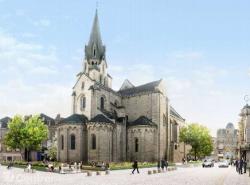 Brive - Les aménagements des abords de la collégiale Saint-Martin se poursuivent. Les travaux continuent et les fouilles archéologiques proprement dites débutent. Après une phase de diagnostic archéologique qui a permis de mettre au jour des sépultures et du bâti datant du haut Moyen-Âge au Moyen-Âge, les fouilles préventives proprement dites ont débuté, hier, et se poursuivront jusqu'au 31 août. Elles sont effectuées par l'Institut national de recherches archéologiques préventives (Inrap). Cette semaine est consacrée au décapage de la place Charles-de-Gaulle. Les archéologues attaqueront les fouilles par le chevet de la collégiale, puis tourneront d'est en ouest pour finir par le parvis.
Brive - Les aménagements des abords de la collégiale Saint-Martin se poursuivent. Les travaux continuent et les fouilles archéologiques proprement dites débutent. Après une phase de diagnostic archéologique qui a permis de mettre au jour des sépultures et du bâti datant du haut Moyen-Âge au Moyen-Âge, les fouilles préventives proprement dites ont débuté, hier, et se poursuivront jusqu'au 31 août. Elles sont effectuées par l'Institut national de recherches archéologiques préventives (Inrap). Cette semaine est consacrée au décapage de la place Charles-de-Gaulle. Les archéologues attaqueront les fouilles par le chevet de la collégiale, puis tourneront d'est en ouest pour finir par le parvis.
http://www.lamontagne.fr/limousin/actualite/departement/correze/brive/2012/07/24/bientot-la-fin-des-travaux-autour-du-parvis-de-la-collegiale-et-leur-debut-dans-la-rue-carnot-1228646.html
USA – Saratoga - Underwater surveys of the river will be conducted early next month between the village of Schuylerville and Saratoga National Historical Park in nearby Stillwater, site of the 1777 battles that many historians consider the turning point of the American Revolution. The archaeology team will be using side-scan sonar and other techniques to search for artifacts left behind by the thousands of soldiers who passed through the area during the 17th and 18th centuries. An invading British army was defeated by American forces in October 1777 after losing the second of two battles fought at Saratoga. Archaeologists excavated land sites at the battlefield last year.
http://www.sfgate.com/news/article/River-surveys-set-for-site-of-Saratoga-battles-3730200.php